Stan Kurth: In His Own Words
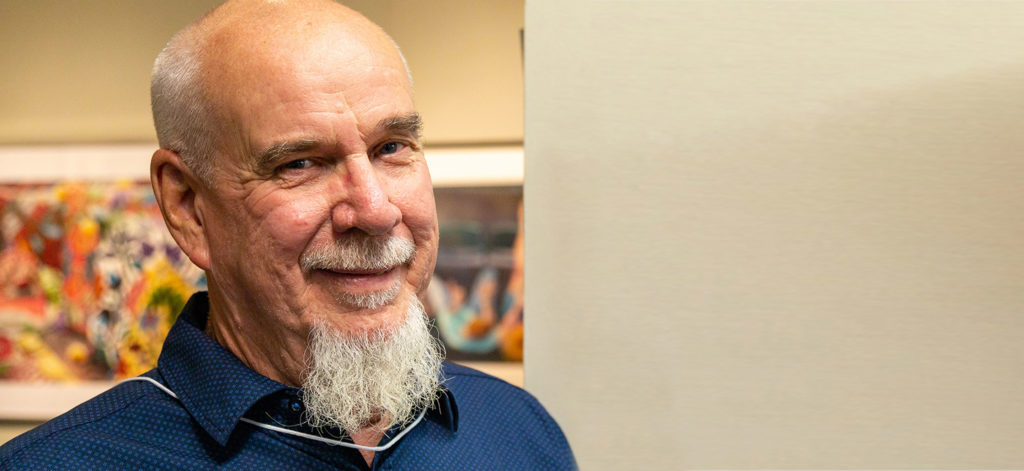
Jul, 27, 2021
ArtistsCommunityPhxArtist Spotlight
Stan Kurth: In His Own Words
Stan Kurth is an intuitive painter, layering pigment and collage elements until he achieves a composition that conveys what he feels in the moment. These complex, contemplative works often elicit reflection on both internal and external worlds, allowing viewers to create and experience their own narratives inspired by what they see in front of them.
Born in Phoenix, Kurth is a third-generation Arizonan who has been painting since he was four years old. His works can be found in private, public, and corporate collections and have been shown in numerous local, national, and international juried exhibitions, including those presented by the National Watercolor Society, Western Federation of Watercolor Societies, San Diego Watercolor Society International, Arizona Watercolor Association, and Arizona Artists, among others. We recently connected with Kurth to learn more about his evolving artistic journey and how his process unfolds.
Here’s Stan Kurth, in his own words.
“My paintings are expressions of my life experience—everything which has moved me along a path to the latest work.”
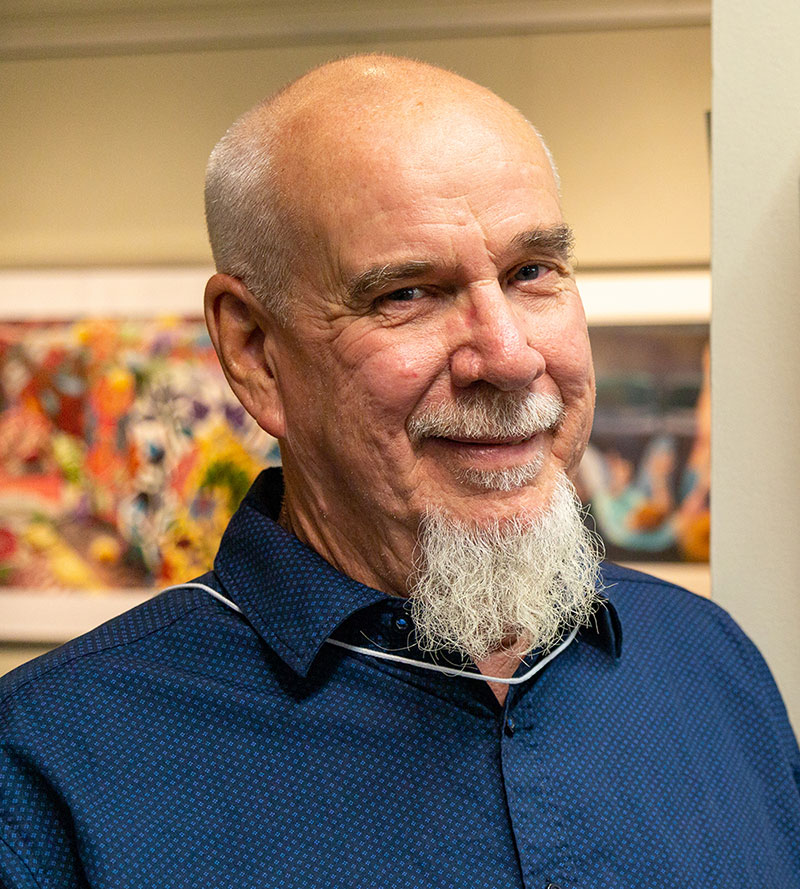
Stan Kurth. Photo credit: Andrew Bird.
PhxArt: Tell us about when you knew you wanted to be an artist. What continues to inspire you to create?
Stan Kurth: When I was four years old, my aunt gave me a small canvas along with some oil paints and let me have at it in her studio. I knew right then I wanted to be an artist. I was enthralled with the paintings my aunt was making, and the smell of turpentine, damar varnish, and linseed oil permeated my olfactory lobe. I’ve been compelled to draw and paint ever since.
As one can imagine, the style in which I do it has changed over the years. For 30 years, I made a living in graphic arts, but I never quit drawing and painting during that time. Almost 20 years ago, I was diagnosed with cancer, and it was life changing in the sense it woke me up from too much procrastination.
As far as inspiration goes, I think Chuck Close said it best: “Inspiration is for amateurs. The rest of us just show up and get to work.” Painting is my life. It is who I am and why I am here. When you know why you are here, you are compelled to work. There were times in my life I battled with thoughts of whether or not being an artist was viable, but I persevered.
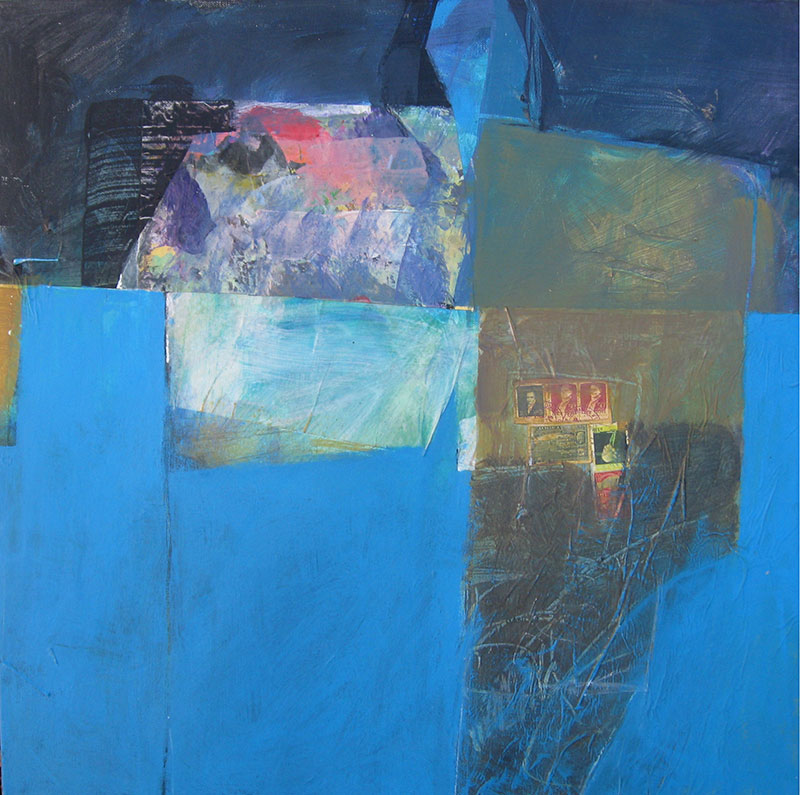
Stan Kurth, Windowpane No.41, 2020. Watermedia and collage on canvas. Courtesy of the artist.
PhxArt: What are the media that you prefer to work in, and what are the topics that you most focus on with your art?
Kurth: Over the years I’ve used a variety of media. During college and a few years after, it was oil-based media, but I currently use water-based media like watercolor, gouache, acrylic, ink, and gesso. I also use collage elements in my work.
I consider myself an intuitive painter and define that as the act of making marks and spreading pigment on a surface until it conveys a personal aesthetic. There is no predetermined finish or elaborate planning. My paintings are expressions of my life experience—everything which has moved me along a path to the latest work. If the work fails to speak visually, no amount of esoteric rhetoric here will change that.
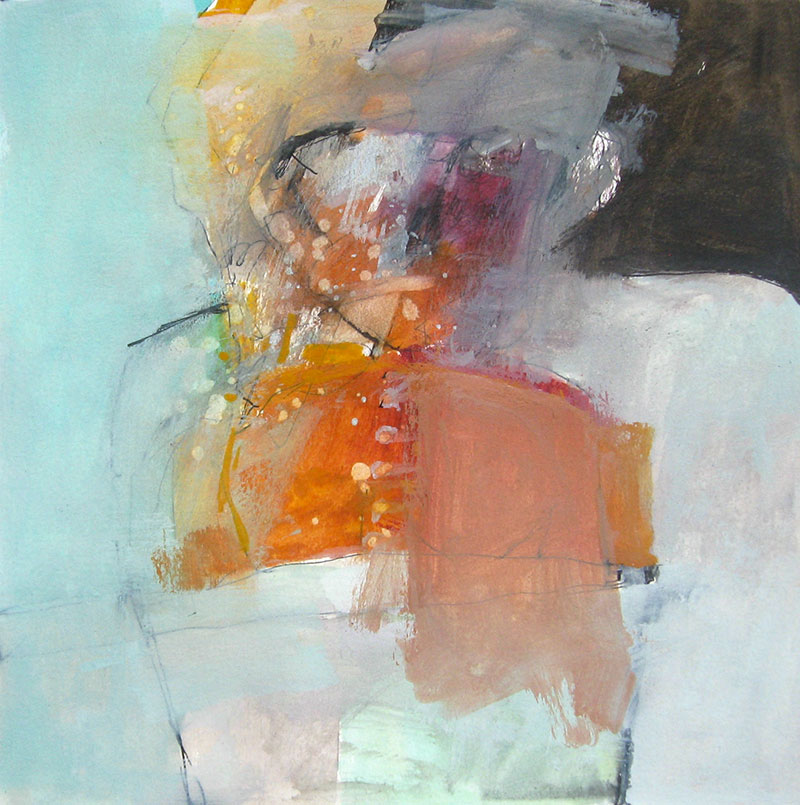
Stan Kurth, 7.20.2018, 2018. Ink, watercolor, and gouache on paper. Courtesy of the artist.
PhxArt: The use of color in your work is striking. Tell us how you choose your palette.
Kurth: I do not consider myself a colorist. However, color is an element of design, and there are principles of design which enhance its use, such as unity, balance, conflict, and dominance. I prefer to contrast color using a variety of saturation and value.
PhxArt: What is something about your process that might surprise viewers?
Kurth: I do not make plans for paintings. I start making marks on a substrate. I’ve been known to spill coffee on that substrate as a starting point.
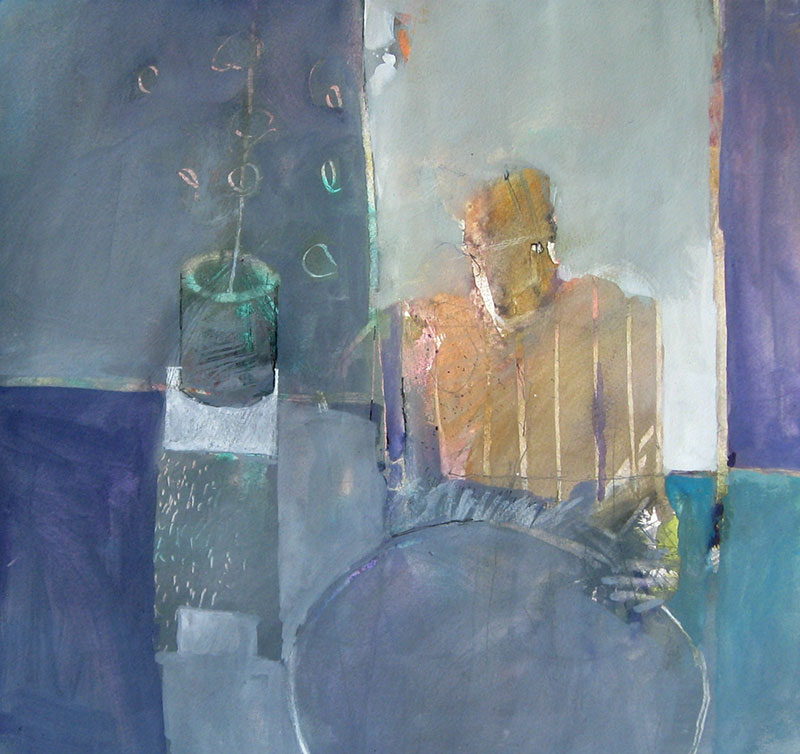
Stan Kurth, Windowpane No.37, 2019. Ink, watercolor, and gouache on paper. Courtesy of the artist.
PhxArt: Who are your greatest artistic influences?
Kurth: I’ve been influenced by many schools of thought, artists, and styles. My favorite artists are 20th-century painters.
PhxArt: Tell us about your experiences teaching and demonstrating art. What first inspired you to begin teaching, and does it affect your personal practice in any way?
Kurth: Teaching more or less just happened. Around 11 years ago, I was asked if I would demonstrate my process, and it started the ball rolling. Sharing and demonstrating what I know and have experienced as a painter has been very rewarding and somewhat reciprocal. I learn a lot from the interaction with all involved during these sessions. What could be better than demonstrating the very thing you most want to do in life and travel the country doing so? Painting intuitively and teaching it simultaneously can be a little challenging.
PhxArt: What are some works, series, or projects you’re currently working on or have recently exhibited?
Kurth: I don’t work in a series in the same sense as other artists. I’m often unsure of titling a painting. So, I came up with three series to ease the struggle. They are Loner, Coastal Anxiety, and Windowpane. Loner is a solitary figure. Coastal Anxiety could be construed as landscape. And Windowpane is lysergic acid diethylamide (anything that doesn’t fit in the other two series.) These series titles make for interesting conversation if anyone asks the significance. At that juncture, I feel free to elaborate with embellishment and esoteric rhetoric.
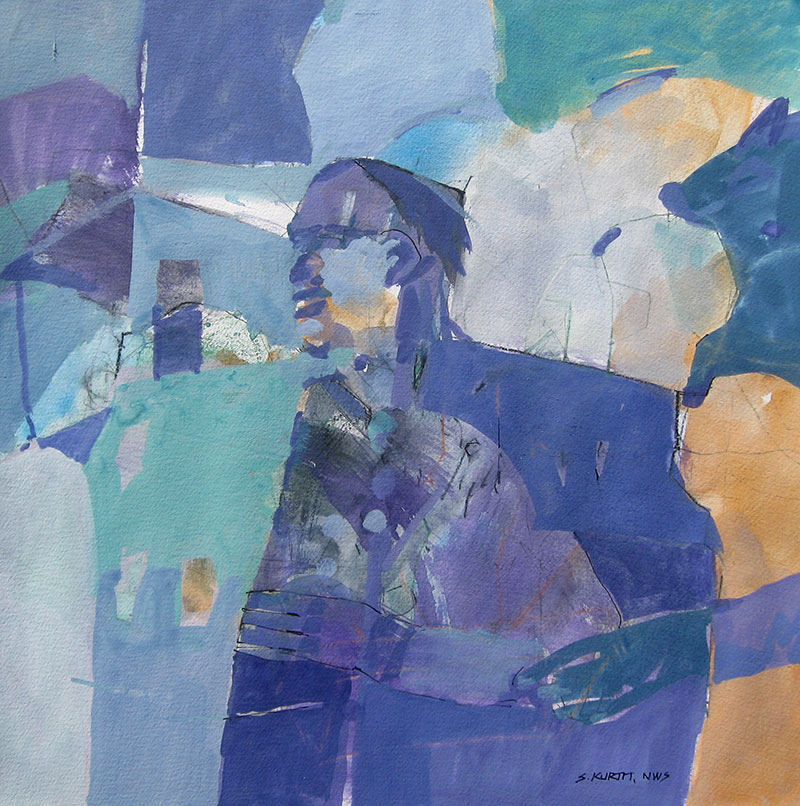
Stan Kurth, Windowpane No.54, 2021. Ink, watercolor, and gouache on paper. Courtesy of the artist.
PhxArt: Can you elaborate here on how you came up with these titles and the various elements that unify the works in each series?
Kurth: I am of the firm belief paintings should stand their ground visually with or without a title, and whether or not they are one of a series. I really don’t work in series per se. It would be contrary to my intuitive process. Other than what I’ve previously stated, there is no unification in my series. The series idea is a ruse to simplify the titling of paintings. In lieu of “Untitled No. X” I can add the next number to one of the series and appease those who must see a title. For them, I’m more than willing to elaborate and embellish with esoteric rhetoric.
PhxArt: What can our community expect to see next from you?
Kurth: Since I am an evolving painter, I’ll simply say that not too long from now, there will be something new. I don’t know what it is yet, but that’s how the process works.
SEE MORE
To see more work by Stan Kurth, visit stankurth.com and espritdecor.com, or follow him on Instagram, Facebook, and LinkedIn. You can also learn more about his process here.
#CreativeQuarantine
We’re curious how creatives are navigating the time of coronavirus. Stan Kurth shares what’s giving him life during quarantine.
Kurth: Since I tested positive for COVID-19 in January and didn’t have a rough go of it, I’m feeling pretty good. I’ve had the vaccine, too. Both of these factors have significantly reduced anxiety brought on by the virus and the subsequent lifestyle it has forced on all of us. Most of my habits are pretty much the same. I spend as much time as I can painting or observing art, either mine or others’.
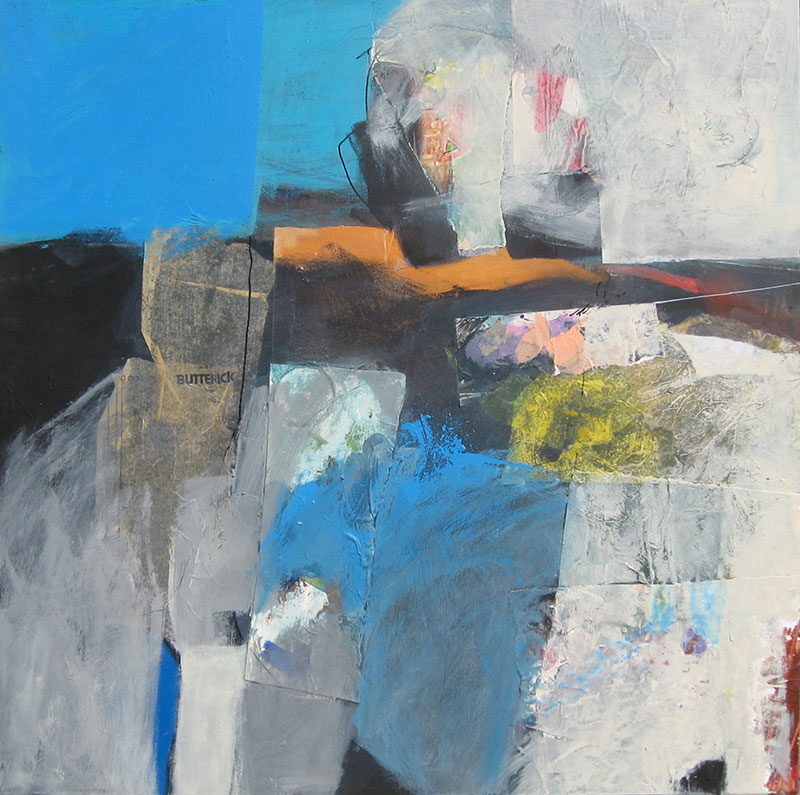
Stan Kurth, Butterick, 2019. Watermedia and collage on canvas. Courtesy of the artist.
Categories
What can we help you find?
Need further assistance?
Please call Visitor Services at 602.257.1880 or email